St. Francis Xavier (1506-1552) was born in the castle of Xavier in
Navarre, Spain. In 1525 he went to Paris where he met St. Ignatius
Loyola and with whom he received Holy Orders in Venice in 1537. In 1540
he was sent to evangelize India. He labored in western India, the island
of Ceylon, Malacca, Molucca Islands, island of Mindanao (Philippines),
and Japan. In 1552 he started on a voyage to China but died on Sancian
Island.
St. Francis Xavier
This saint, one of the Church's
most illustrious missionaries, came from a noble Basque family in Spain.
He studied at the University of Paris, where he taught philosophy after
obtaining his degree of master of arts. Here he met Ignatius of Loyola
and was enrolled as one of the first seven Jesuits. They decided to go
to the Holy Land, but the war between the Turks and Venice prevented
this, so for a time Francis labored at Padua, Bologna, and Rome.
In
1540 Ignatius chose him as the first missionary to the Portuguese East
Indies. Francis sailed from Lisbon armed with four papal briefs making
him nuncio with full powers and recommending him to the Eastern princes.
He landed at Goa in India and began a vast apostolate lasting over ten
years. Here he instructed the adults, gathered the children by ringing a
bell in the streets, catechized them, and also visited the hospitals
and prisons. He then turned to the native Indians, teaching the simple
folk by versifying Catholic doctrine and fitting the verses to popular
tunes. He then went on to Cape Comorin and began the conversion of the
Paravas, some days baptizing so many that at night he could not raise
his arm from fatigue. Then to Travencore where he founded forty-five
churches in various villages. Then to Malacca in Malaya, and for
eighteen months from island to island, preaching, instructing,
baptizing.
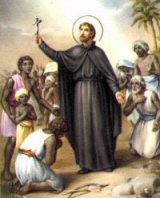
On
his return to Goa he heard of the vast harvest of souls awaiting the
laborers in Japan and he set out for this field with several companions,
arriving at Kagoshima in 1549. He set himself to learn the language and
started to preach and teach with such success that twelve years later
his converts were found still retaining their first fervor. In 1551 he
returned to Malacca to revisit his converts in India. Now a new goal
loomed up before his eyes—pagan China, but he was not to reach it.
Arriving
on the island of Sancian at the mouth of the Canton river, he became
ill of a fever and would have died abandoned on the burning sands of the
shore if a poor man named Alvarez had not taken him to his hut. Here he
lingered for two weeks, praying between spells of delirium, and finally
died, his eyes fixed with great tenderness on his crucifix. He was
buried in a shallow grave and his body covered with quicklime, but when
exhumed three months later it was found fresh and incorrupt. It was
taken to Goa where it is still enshrined. St. Francis Xavier was
proclaimed patron of foreign missions and of all missionary works by
Pope St. Pius X.
Excerpted from A Saint A Day by Berchmans Bittle, O.F.M.Cap
Patron:
African missions; diocese of Alexandria, Louisiana; Apostleship of
Prayer; Australia; black missions; Borneo; China; East Indies; foreign
missions; Goa, India; diocese of Green Bay, Wisconsin; India;
archdiocese of Indianapolis, Indiana; Japan; diocese of Joiliet,
Illinois; missionaries; Missioners of the Precious Blood; Navarre,
Spain; navigators; New Zealand; parish missions; plague epidemics;
Propagation of the Faith.
Symbols: bell; crucifix; vessel; Pilgrim's staff; rosary; lily; font; ship and crucifix; globe.
Often portrayed as:
young bearded Jesuit with a torch, flame, cross and lily; young bearded
Jesuit in the company of Saint Ignatius Loyola; preacher carrying a
flaming heart.
Things to Do:
- What does it
mean to be an apostle? Consider how you might imitate St. Francis Xavier
in apostolic works in your own situation. Read this letter from St. Francis to St. Ignatius to get an idea of his zeal.
- Read some more about St. Francis and ideas for Celebrating the Feast of St. Francis Xavier.
- St.
Francis was sent to India and Japan. Pray for the Church in these
countries, and learn more about the modern Church in India here and here, read about the history of the Church in Japan.
- Find out about and support the Holy Childhood Association (St. Francis always started with the children first).
- Teach your children to pray St. Francis' favorite prayer, "Give me souls" when they have some suffering to offer up.
- Spend
some time meditating on St. Ignatius' response to St. Francis before
his conversion, "What does it profit a man if he gains the whole world
but suffers the loss of his soul?"
- Say the Litany of St. Francis Xavier.
- Make a big pot of soup for the Feast of St. Francis Xavier.
- Study some beautiful art depicting St. Francis Xavier at Olga's Gallery.
https://www.catholicculture.org/culture/liturgicalyear/calendar/day.cfm?date=2019-12-03

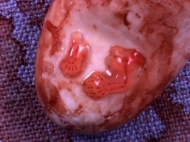
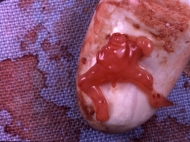

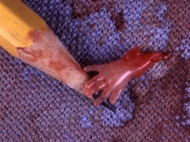






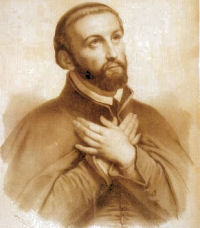
 On
his return to Goa he heard of the vast harvest of souls awaiting the
laborers in Japan and he set out for this field with several companions,
arriving at Kagoshima in 1549. He set himself to learn the language and
started to preach and teach with such success that twelve years later
his converts were found still retaining their first fervor. In 1551 he
returned to Malacca to revisit his converts in India. Now a new goal
loomed up before his eyes—pagan China, but he was not to reach it.
On
his return to Goa he heard of the vast harvest of souls awaiting the
laborers in Japan and he set out for this field with several companions,
arriving at Kagoshima in 1549. He set himself to learn the language and
started to preach and teach with such success that twelve years later
his converts were found still retaining their first fervor. In 1551 he
returned to Malacca to revisit his converts in India. Now a new goal
loomed up before his eyes—pagan China, but he was not to reach it. 





